SCOTTISH EXPERIMENTAL DUPLEX CANCELLATIONS
Glasgow commenced its experimental duplex marks with a basic Type followed by two very similar (to each other) Types; the latter Type being the so called Madeleine Smith postmarks. One of these is missing from the Proof Books (as is Type 1) and so allocating examples to the correct Type is not always easy
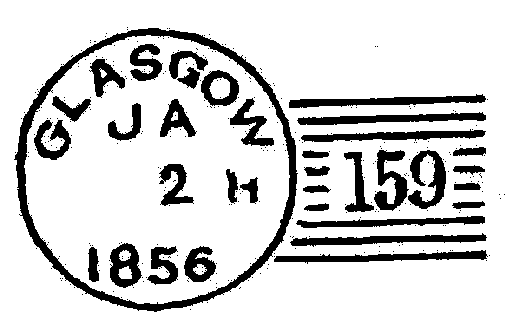
Characteristics: Four short bars each side of ‘159’ and not far different from one of the finally adopted Glasgow duplex marks (without the short bars)
Proofed: There is no evidence of this mark in the Proof Books
EKD: 18th October 1855
LKD: 4th February 1856
Months of Use:

Known Codes:
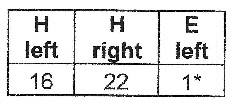
* the example with Code ‘E’ (dated 2nd February 1856) is quite clear and is not a damaged ‘H’.
Code ‘H’ was on the left of the day until the end of October 1855 and then on the
right of the day until mid-
Scarcity Rating: F (Rare)
Type 2 (‘Madeleine Smith’)
The second Experimental Glasgow postmark is universally known as the ‘Madeleine Smith’ mark.
The reason for this is that in July 1857 a notorious trial took place in Glasgow in which the defendant, 22 year old Madeleine Smith, was charged with poisoning her lover. In the event, the verdict was ‘not proven’ which in Scotland, unfortunately for the defendant’s future reputation, is not the equivalent of ‘innocent’.
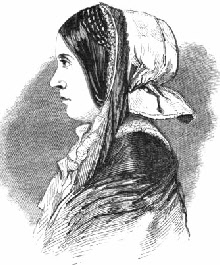
The prosecution relied to some extent on an undated letter contained in an envelope on which there was a blurred strike of this cancellation and in his summing up the judge made pointed remarks as to the desirability of legible postmarks. It has been suggested that this Postmark was withdrawn because of the Judge’s criticism but this is unlikely as the trial did not start until 30th June 1857 and the postmarks had already been phased out some weeks previously.
It is also true to say that the majority of these Postmarks are relatively clear (see later Picture Gallery) but despite this, the mark will forever be associated with this young lady.
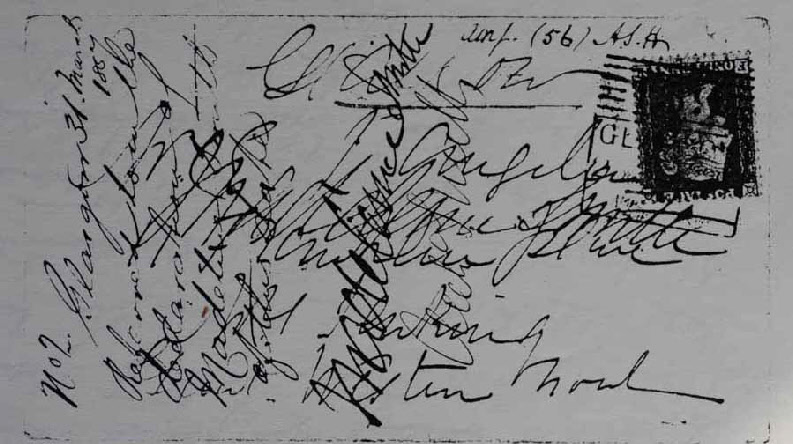
The above is an envelope dated 31st March 1857 written by Madeleine Smith and addressed to the deceased; Emile L’Angelier.
Madeleine ended her days (after two husbands) in New York where she was known as Leena Sheehy and reached the ripe old age of 93 years.
Should you wish to to learn more then just Google her name but be warned; you might be drawn to web sites showing images of a scantily clad 70’s actress of the same name!!
-
Returning to the Postmark itself, there have been various assumptions as to the number of different Type permutations that could have existed for this postmark and I hope that the following will add some clarity to the subject.
FACT 1
There is only one impression in the Kirkwood Proof Books and this is copied below.
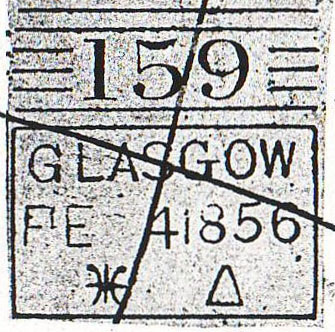
ASSUMPTION
James Mackay opined in his ‘Scottish Numeral Postmarks’ that a further ‘Madeleine Smith’ mark was proofed on the same day, was cut out of the Proof Books at a later stage and sent to the Stationery Office in London. He further opined that this provided the potential for the separate elements (the ‘Canceller’ and ‘Dater’ portions) being interchangeable thus allowing the possibility of four different Types. This of course was always possible with the later ‘screw’ type cancellers but there is no evidence that this actually occurred (thank goodness!!).
FACT 2
To the right of the above Proof mark there certainly is a ‘cut out’ and what appears to be written comment to the fact that something was sent to the Stationery Office in London .
However, there is no evidence as to precisely what was cut out, who cut it out, who made the written comment and when. I have found no evidence in the Post Office Archives one way or the other and so we are left with examining actual examples.
FACT 3
Despite the absence of a second mark in the Proof Books, the evidence shown below clearly proves that a different Type DID exist and was used simultaneously with the above Proof Type.
However, after studying several hundreds examples I cannot see any evidence at all that the Dater and Canceller portions were interchanged in practice (although I have a few ‘not proven’ examples!).
This leaves us with two basic Types only although damage to part of the Canceller portion of one of the Types produces a further State.
This is explained below using close ups of actual examples.
CANCELLER 1
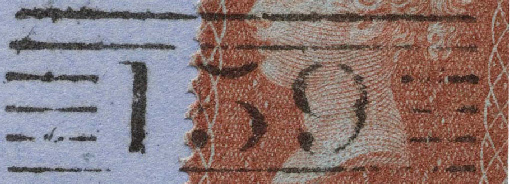
This is the Type which is shown in the Proof Books above.
The key to identification is that firstly the top bar is complete and secondly the left and right small
bars are horizontal to each other.
CANCELLER 2
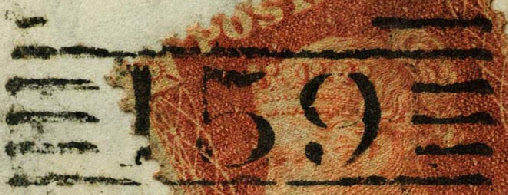
This is type 1 but with a significant break in the top bar which occurred between
the 11th -
CANCELLER 3
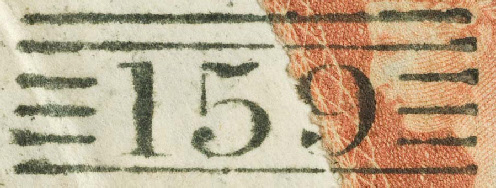
This is the Canceller which is not shown in the Proof Books.
The top bar is complete but the most important feature is that the left top small bar is lower than its companion on the right. Which produces a larger gap on the left between it and the second large continuous bar.
DATER 1

Previous researchers have concentrated on serif of the first ‘G’ in Glasgow as the major difference between these two Daters 1 and 2. This is dangerous as over/under inking creates considerable differences with small line such as serifs.
What is more obvious is the ‘S’ in Glasgow. In this type (which is the type shown in the Proof Books) the lower loop is squat and is dissimilar to the higher loop. Also the letter ‘L’ often appears to be leaning backwards.
This Dater 1 should always be seen with either Canceller 1 or 2 above although occasionally this is difficult to see.
DATER 2

All the letters in this type appear to be of finer design with the letter ‘S’ having similar top and bottom loops unlike Dater 1.
This Dater 2 should always be seen with Canceller 3 above.
Clear impressions are not always available but it is hoped that the above pointers should enable collectors to identify types correctly.
-
Some other comments which are common to all Types/States:
1. It is not unusual for the date to be expressed as Day/Month rather than the more normal Month/Day
2. Code letter ‘O’ is always of an oval design; this letter is not seen as a Code for other Scottish Experimentals. Also the letter S can be found normal and inverted (upside down), see:
![]()
![]()
![]()
Details on each of the Types are now provided below.
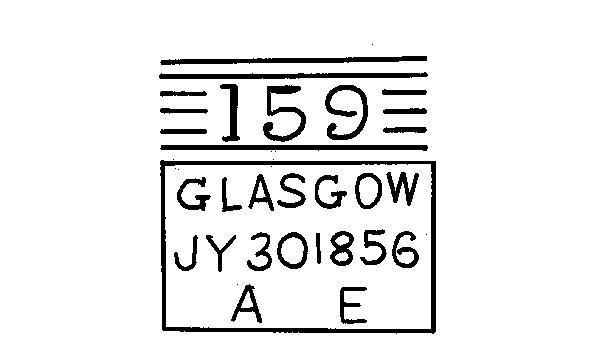
Characteristics: This is a combination of Canceller 1 and Dater 1 i.e. the same as that shown in the Proof Book. Examples in Green are seen in the first two weeks of May 1856 and possibly a Blue example in April 1856
Proofed: 4th February 1856
EKD: 6th February 1856
LKD: 11th September 1856
Months of Use:

Known Codes:
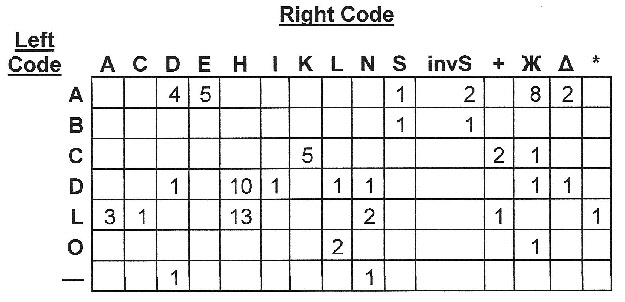
Scarcity Rating: C (Average) although Blue/Green examples are rated F (Rare)
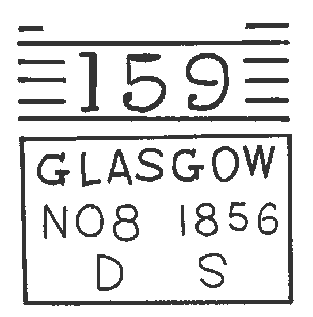
Characteristics: This is Type 2 State 1 but with the top horizontal bar breaking
some time between 11th -
Greenish/Blueish examples have been seen during February, April and May 1857.
Proofed: N/A
EKD: 17th September 1856
LKD: 11th June 1857
Months of Use:

Known Codes:
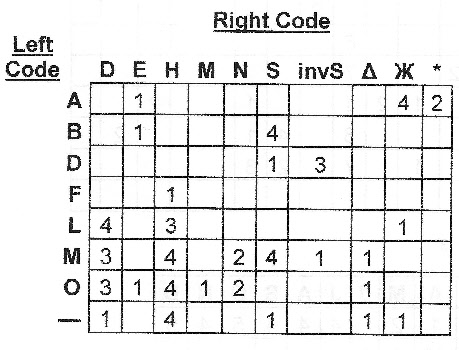
Scarcity Rating: C (Average) although (true) Blue/Green examples are rated F (Rare).
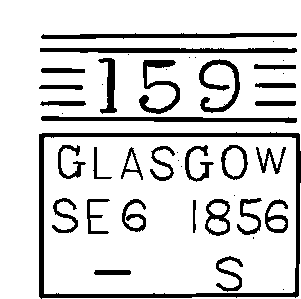
Characteristics: This is a combination of Canceller 3 and Dater 2; the specific characteristics are fully described above . It was used alongside Types 2 (States 1 and 2) albeit it was rarely seen during the first five months of its life.
Similar to Type 2 State 2 above there does seem to be damage to various check letters. Firstly ‘M’ and ‘E’ are truncated and secondly ‘L’ , in the majority of cases, shows a break in the corner. Examples are shown in the Picture Gallery below.
As for Type 2 State 2 Greenish/Blueish examples have been seen during February to June 1857
Proofed: Not in Proof Books
EKD: 10th February 1856
LKD: 12th June 1857
Months of Use:

Known Codes:
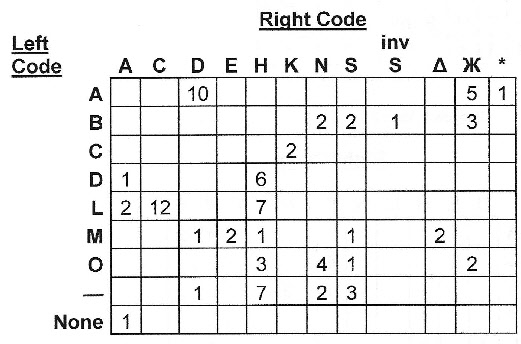
Scarcity Rating: C (Average) although (true) Blue/Green examples are rated F (Rare).
Sideways Duplex
-
PLEASE VIEW IN GOOGLE CHROME



